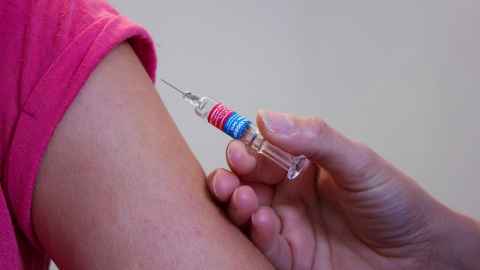Vaccination and trust are key to fight killer diseases
3 December 2018
Opinion: Childhood immunisation is a powerful public health intervention. But gains against some diseases are becoming fragile as immunisation coverage stalls, writes Associate Professor Nikki Turner.

Childhood immunisation programmes are one of our most effective public health interventions. Smallpox, one of the biggest killers of history, is eradicated. Polio is close and we have seen dramatic reductions in other diseases such as measles.
However, these historic gains are now, at times, fragile.
The Global Vaccine Action Plan set ambitious goals for the current ‘Decade of Vaccines’ but only one of the five goals is being achieved. Internationally, childhood immunisation coverage has stalled for the past eight years with the important infant vaccines sitting at around 85 percent coverage.
Furthermore, there are significant inequities for many children, with some countries, some areas, and some cultural and socioeconomic groups having much lower coverage, therefore higher disease rates. What is going on?
Internationally there is both social and political volatility. Immunisation programmes are affected by poverty and population growth, conflict, displaced people, geopolitical uncertainly, natural disasters and environmental disruption. Alongside this, parts of the world are experiencing a growth of individuals and groups who are either distrustful or very fearful of immunisation, a term called vaccine hesitancy.
In New Zealand, vaccine hesitancy has been with us for centuries, so this is not a new issue and it remains a small percentage of the population. However, it is not evenly distributed throughout the population and can often has a disproportionately loud voice.
Absence of disease is a difficult product to sell. The better you do, the less visible it is. We have many international examples of high immunisation coverage leading to disease becoming less visible, populations then losing the demand for the vaccine, rates dropping off, disease returning and then the community demanding the vaccine again.
...the vast majority of us continue to trust that our health services are committed to delivering based on the accumulated best scientific knowledge. Yet there are caring, well-meaning people who feel they have got this wrong.
For all of us, it is stories and personal experiences that touch us more than statistics and graphs. For example, Hib disease used to be the most common cause of bacterial meningitis in young children. We have an extraordinary graph showing that after the HIB vaccine was introduced in 1995 there was a dramatic drop off in childhood disease so that it is now a very rare disease. In practice, this means that now around 30 to 60 children a year do not suffer this awful disease. How do we translate this absence of numbers meaningfully into our lives?
There are range of other issues that add to the communication challenges. The fear of vaccine side effects can feel disproportionate when the fear of the disease is not immediate or real. The difference between a coincidental event and a vaccine reaction can be very difficult at times to understand. When the majority of a population is being routinely vaccinated, issues can arise coincidentally soon after vaccines are given. In New Zealand, it is estimated that in the day after an immunisation is given to an infant we would expect to see around three infant deaths coincidentally based on the known death rates from all causes, unrelated to giving the vaccine. I would find it very hard to believe the science above my personal emotional experience if that happened to my infant.
Accentuating our very natural concerns is the amplification effect of social media today with rapid global connectivity. If I have a specific concern, social media will link me immediately and specifically to like-concerns and this often just raises my concern out of proportion to the overall science. For those of us who thought use of social media was broadening our horizons, sadly I fear it is frequently in danger of doing completely the opposite.
Added to this many of us have a deep-rooted fear of injections (myself included!) Putting an injection in a healthy child can feel unnatural, and we often do not recognise this as a barrier.
Overall the challenge for childhood public health programmes is the issue of trust. We all know there are real vaccine side effects, errors can happen and scientific advances mean that advice evolves and change. Recognising this, the vast majority of us continue to trust that our health services are committed to delivering based on the accumulated best scientific knowledge. Yet there are caring, well-meaning people who feel they have got this wrong.
It is a complex world and we can all feel fearful and out of control of our own destiny at times. This does not add up to disregarding years and years of accumulated international best public health advice. Currently, trust is not in a good state internationally, and maybe conversations around this should actually be our starting point to support the best possible health outcomes for all our children.
Nikki Turner is an Associate Professor in General Practice and Primary Health Care. This article reflects the opinion of the author and not the views of the University of Auckland.
Used with permission from Newsroom Vaccination and trust are key to fight killer diseases published on 3 December 2018.